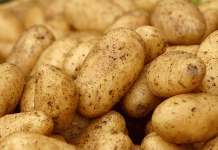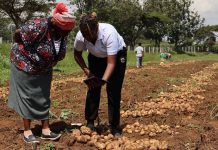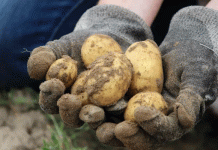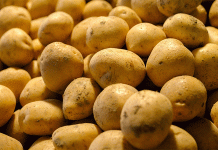Although the potato area has decreased considerably this year, the yield could turn out to be higher. “The yield per hectare will be decisive,” said North-Western European Potato Growers (NEPG).
The grouping of potato growers’ organizations in Northwestern Europe states that a number of factors could threaten profitability this year as well. NEPG also notes that realized prices this spring were higher than Belgapom’s recommended prices.
Last month , VILT already reported that the potato area in Flanders had fallen for the first time in years . Following the disastrous corona year, 6.5 percent fewer potatoes were planted. In Belgium as a whole, this decrease is even at 8.5 percent, while the reaction in neighboring countries was slightly less intense. For example, the decrease in Germany is 3.5 percent, the French growers are down by 3 percent and the Netherlands is at -6.5 percent. This is evident from figures from the NEPG.
Despite the decrease in acreage, production could turn out higher, according to the organization. “Due to the rainfall, the harvest is in pretty good shape, although we have to wait and see for further weather developments,” explains NEPG secretary Daniel Ryckmans.
Higher disease pressure and rising production costs
François Huyghe of Boerenbond agrees that tuber setting is very good this year, but that the disease pressure has increased due to temperature fluctuations. Due to the increased disease pressure and rainfall, growers are forced to treat their potatoes more intensively, while the cost price for crop protection products has increased considerably. “The prices for pesticides, energy and fertilizers have skyrocketed,” NEPG said. “Liquid nitrogen has even doubled in price in a few months.”
“Prices for pesticides, energy and fertilizers have risen enormously. Liquid nitrogen has even doubled in price in a few months
Daniel Ryckmans – Secretary of North-Western European Potato Growers
In contrast to the higher cost price, an increase in production could also lead to lower potato prices. A large proportion of the potatoes (70% in Flanders) were contracted and sold at the beginning of this year, leaving about thirty percent for the free market. “The more production and the higher the supply on the free market, the lower the price can be,” says Ryckmans.
The secretary of the NEPG emphasizes that the corona crisis still hangs over the sector like a sword of Damocles, although the situation is developing in the right direction. “But there could always be restrictive measures that reduce the demand for frozen chips and other potato products.”
The farmer normally makes his best margins on the free market, while contract cultivation is often no more than cost-effective. Last year the price on the free market fell sharply and the price fell below four euros (PCA/Fiwap quotation). It is currently at 11 euros, still only a fraction of the price in 2018 when a ton of potatoes yielded almost 30 euros.
Higher prices paid than Belgapom listing
The members of NEPG also noted that the potatoes have yielded more in recent months than Belgapom’s recommended prices, an average of the prices paid by traders and the processing industry. The Belgapom quotation is the most commonly used price for potatoes that are processed into frozen potato products. “Growers did not want to sell the potatoes at Belgapom prices, which forced some traders to pay higher prices,” explains Ryckmans, who received such signals from several growers’ organisations.

According to Huyghe, this is rather an exception. “The Belgapom prices normally give a good picture of the market situation. According to the farmers’ union employee, the Belgapom quotations do not differ much from those of the Potato Cultivation Test Center (PCA). “The PCA price is established on the basis of inquiries from the growers. Unlike Belgapom, PCA indicates the price in a range with a minimum price and a maximum price for that particular week. “Both quotations are very similar and reflect the market situation” he decides.
Source: Own reporting










